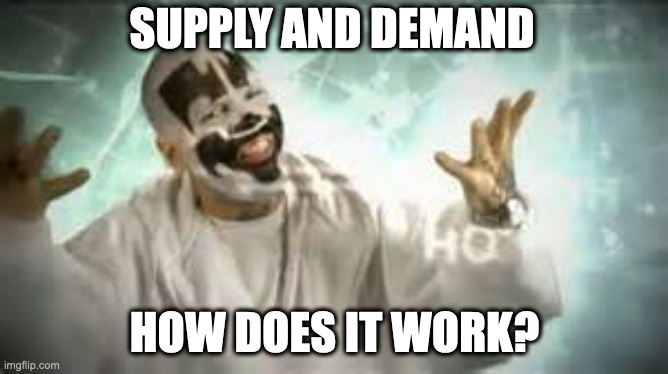It’s one thing when affluent Granola Americans try to green their own lives via expensive organic food, solar panels and electric cars, but quite another when they write their delusional green policy choices into law. Just as reliance on trendy renewable energy helped trigger Texas ice storm blackouts, so too have other government regulations led to serious, pressing problems.
Take Sri Lanka as the first example:
In less than a year since Sri Lanka became the first country in the world to fully ban conventional agriculture, an economic crisis of epic proportions has gripped the island nation, launched waves of protests, and on Monday prompted the resignation of Prime Minister Mahinda Rajapaksa. Sri Lanka’s pivot to organic farming — with a ban on synthetic fertilizers — triggered a drastic decline in the production of critical crops like tea and rice, something that many agricultural experts had foreshadowed for months.
“Predicted” is the word you want to use there. Or “foretold” if you want to be a little grandiloquent and Biblical for dramatic effect.

And lo, just as the prophecy foretold, it came to pass:
Most accounts show that production dropped between 20 percent to 50 percent of what it was prior to the switch, leaving many of the country’s 22 million people in dire straits. These happenings paint the picture of the clear connection between synthetic crop protection products and food security. And not only had Sri Lanka’s ban on fertilizers, pesticides, weedicides, and fungicides resulted in massive food shortages, it also led to the doubling in price of rice, vegetables, and other market staples.
Just as with Lysenkoism or Mao’s war on birds, reliance on delusional theory rather than actual science led to famine and death.
By the time Sri Lanka opted to reverse most of its mandate over the winter, the situation had gone too far.
The turmoil spurred shortages of electricity and other goods and services in Sri Lanka. Many people have died — and scores injured — in economic- and hunger-related protests, and Rajapaksa required a military rescue this week as chaos closed in around him.
Last summer, prior to the changeover to full organic, 30 national experts wrote to Rajapaksa’s brother, President Gotabaya Rajapaksa…
“Would you like a side order of Nepotism with your Green Delusion Special?”
…outlining their concern over this seismic policy shift. While they recognize the goals of the president’s program, they proposed a phased, consultative approach — with actual experts — rather than cold turkey, emotive mandates.
“Prior to this policy, the government had unsuccessfully tried to commercialize farm land, which is the biggest commercial asset the country has. So many of us think this was another way to try and get farmers to leave their land, or to weaken the farmers’ position and enable a land grab,” Vimukthi de Silva, an organic farmer in Rajanganaya, told The Guardian.
So just like here, the sheep’s clothing of pious environmentalism hides the ravenous rent-seeking wolf of public subsidy cash grabs.
Closer to home, anti-fossil fuel regulations to fight “Global Warming” have left America dangerously short of refining capacity.
We are now reaching the point where the cost of diesel fuel is making some goods too expensive to transport. One trucker told the Orlando Fox affiliate yesterday that, “The cost of diesel is single-handedly taking us out of the game one by one no matter how big you are. . . . If you’re getting paid $2 per mile you’re not taking that load no matter if it is baby formula or orange juice because the cost of diesel is $5 plus. You just can’t take that load.”
Tractor-trailer trucks loaded up with goods are heavy, meaning that they average “only 6.5 miles per gallon. Their efficiency ranges wildly between 3 miles per gallon going up hills to more than 23 miles per gallon going downhill.” Because of their low fuel economy, trucks have massive gas tanks — tanks with a capacity between 120 and 150 gallons — and some trucks may have two tanks for longer hauls. In other words, on one full tank of diesel, a truck can travel 780 to 975 miles. But as of this morning, filling up the tank for that trip will cost $668 to $836 — a cost of 85 cents per mile.
Keep in mind, “A majority of trucking companies pay [drivers] between $0.28 and $0.40 cents per mile according to the U.S Bureau of Labor Statistics. A few companies do pay up to $0.45 cents per mile.”
The default setting of President Biden, Senator Elizabeth Warren, and a lot of other Democrats is that if something is expensive, it is because some company is being greedy, and that the way to “bring down inflation” to “make sure the wealthiest corporations pay their fair share.”
But the cost of a gallon of unleaded gasoline or diesel fuel is not just a matter of how greedy an oil company feels on any given day and has very little to do with how much that company is paying in taxes. The cost of crude oil makes up 59 percent of the cost of gallon of regular gasoline, and just 49 percent of the cost of diesel. Refining is a slightly bigger share of the cost of a gallon of diesel fuel than of the cost of a gallon of regular gas — 23 percent for diesel to 18 percent for regular, according to the U.S. Energy Information Administration. Distribution and marketing costs make up 18 percent of diesel costs.
And keep in mind, federal taxes on diesel are slightly higher than those on regular gasoline — 24 cents per gallon on diesel compared to 18 cents per gallon on regular.
Explanation of sales tax cost of diesel snipped.
But if we really want to know why the cost of diesel is increasing faster than the cost of regular gasoline, we need to look at those refining costs. It doesn’t matter how much we “drill, baby, drill,” unless we also have the ability to “refine, baby, refine,” — or we become dependent upon foreign refiners.
Back in 2020, U.S. oil-refinery capacity peaked at 19 million barrels per day, according to the EIA. But because of the pandemic, and the delayed decision to permanently shut down the Philadelphia Energy Solutions refinery after a major accident in 2019, U.S. refinery capacity declined significantly during that year. (PES was the largest oil refinery on the East Coast and refined 335,000 barrels per day.)
In addition to the PES refinery, five more shut down over the course of 2020: the Shell refinery in Convent, La., the Tesoro Marathon refinery in Martinez, Calif., the HollyFrontier refinery in Cheyenne, Wyo., the Western Refining refinery in Gallup, N.M., and the Dakota Prairie refinery in Dickinson, N.D. Those six collectively refined more than 1 million barrels of oil per day.
Thus, the U.S. started 2021 with its lowest annual refining capacity in six years, and that capacity did not expand significantly over the rest of the year. And as the pandemic’s effects on American life faded, month by month, demand for fuel increased — not just from drivers but from trucking and shipping companies, construction companies — remember, 98 percent of all energy use in the construction sector comes from diesel — and from airlines and other consumers of jet fuel.
Why are we experiencing these stunning fuel prices? Because we’re getting back to pre-pandemic levels of demand, while our refineries are pumping out about a million fewer gallons of fuel per day than they did before the pandemic. And you know what happens when you mix lower supply with higher demand.

Right now, someone is likely shouting, “Reopen those closed refineries, then!” But that’s not so easy.
The former PES refinery complex in Philadelphia is being demolished. The Shell refinery is slated to become an “alternative fuels complex,” and it’s a similar transition for the Tesoro refinery. The HollyFrontier refinery is already converted to processing biofuels, as is the Dakota Prairie refinery. (Certain environmentalists will denounce the greedy oil companies and praise the companies producing environmentally friendly biofuels, never stopping to check and realize that many of them are the same companies.)
Wait, I haven’t even gotten to the bad news: Chemical maker Lyondell Basell Industries announced in April that the company will permanently close its Houston crude-oil refinery by the end of 2023. That plant refines about 263,000 barrels of gasoline, diesel, and jet fuel per day.
We almost never build oil refineries in the U.S. anymore. According to the EIA, the newest refinery in the United States is the Targa Resources Corporation’s site in Channelview, Texas, which began operating in 2019 and processes 35,000 barrels per day. Before that, the newest refinery with significant downstream unit capacity was Marathon’s facility in Garyville, La. That facility came online in 1977.
Back during the late Bush and early Obama years, Hyperion Energy attempted to start a massive project in South Dakota, aiming to build what would have been the sixth-largest oil refinery in the nation. But the project grew mired in red tape and environmentalist opposition and eventually was canceled. We would have experienced widespread shortages of refined fuels many years ago if some companies had not completed large-scale expansions of existing refineries.
And so, President Biden’s fuming about oil companies not drilling and demanding they “use it or lose it” is something of a red herring; it would not do U.S. oil consumers a lot of good to dramatically expand the supply of crude oil if there isn’t enough refinery capacity to turn that oil into useful products. And right now, there are no major projects planned to build new oil refineries or expand capacity at the existing ones.
Gripped by their green delusions, Democrats have long pledged to make fossil fuel too expensive to use. What they didn’t tell you, however, is that the side effect would be to make it too expensive for truckers to actually transport your food to you.


